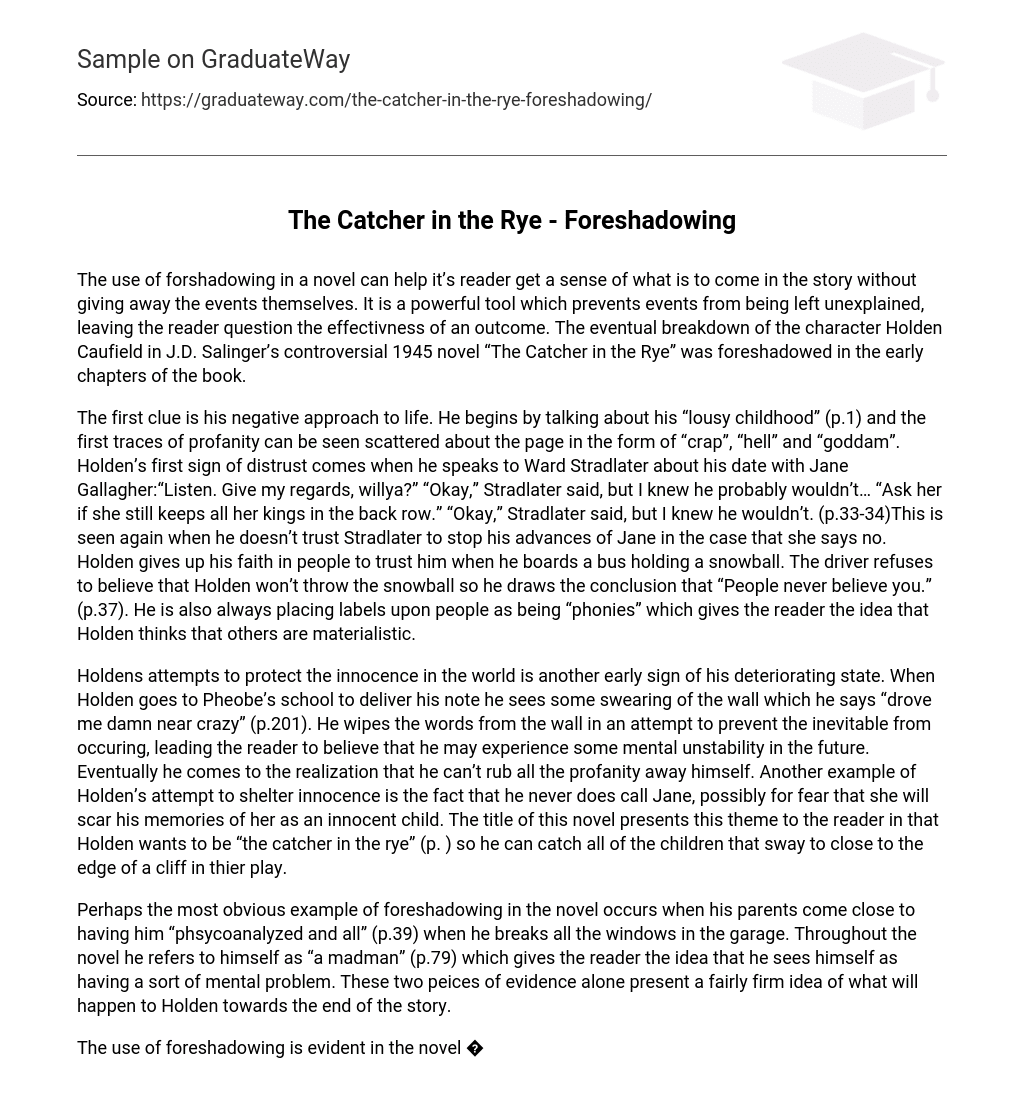Foreshadowing in a novel can give readers an idea of upcoming events without directly revealing them. It is a valuable technique that avoids leaving events unexplained and causing readers to question the outcome’s effectiveness. In J.D. Salinger’s controversial 1945 novel “The Catcher in the Rye,” the eventual breakdown of the character Holden Caufield was foreshadowed in the early chapters.
The first indication of his negative outlook on life can be seen in Holden’s discussion of his troubled childhood (p.1), along with the scattered profanity in his words such as “crap,” “hell,” and “goddam.” This pessimism is further evident when Holden expresses his distrust towards Ward Stradlater during a conversation about his date with Jane Gallagher: “Listen. Give my regards, willya?” “Okay,” Stradlater replied, though I suspected he wouldn’t… “Ask her if she still keeps all her kings in the back row.” “Okay,” replied Stradlater, but deep down, I knew he wouldn’t (p.33-34). A similar lack of trust is shown when Holden relinquishes his belief in people’s trustworthiness while holding a snowball on a bus, as the driver refuses to believe Holden’s assurance that he won’t throw it, leading him to conclude that “People never believe you” (p.37). Additionally, Holden frequently labels others as “phonies,” suggesting his belief that they are materialistic.
Holden’s efforts to preserve the purity of the world indicate his declining mental state. Upon seeing profanity written on the wall at Phoebe’s school, he is driven to madness and erases the words, trying to prevent something inevitable from happening. This implies that he may suffer from future instability. Eventually, he realizes that he cannot erase all the profanity on his own. Another example of Holden’s quest to protect innocence is his failure to call Jane, possibly out of fear that she will taint his memories of her as a pure child. The novel’s title, “The Catcher in the Rye,” conveys this theme as Holden aspires to save children from stepping dangerously close to the edge of a cliff during their play.
The novel demonstrates foreshadowing when the protagonist’s parents contemplate subjecting him to psychological analysis following his destruction of the garage windows (p.39). Additionally, throughout the narrative, the protagonist labels himself as “a madman” (p.79), indicating his perception of having a mental ailment. The combination of these two indications strongly implies Holden’s eventual fate towards the conclusion of the story.
The novel “The Catcher in the Rye” effectively utilizes foreshadowing to hint at the eventual breakdown of Holden. The use of this literary technique allows the reader to anticipate the outcome of Holden’s problems and understand their causes. As a result, the author’s foreshadowing technique in the novel is successful and not surprising to the audience.





